Altair, or Alpha Aquilae, is the brightest star in the constellation Aquila, the Eagle. It lies only 16.7 light years from Earth. It has a visual magnitude of 0.77. Along with the stars Vega in Lyra constellation and Deneb in Cygnus, Altair forms the Summer Triangle, a prominent asterism in the northern hemisphere. It is one of the nearest stars to Earth that are visible to the unaided eye.
Altair is the 12th brightest star in the sky. It is 10.6 times more luminous than the Sun and has 1.79 times the Sun’s mass. The star was classified as a Delta Scuti variable in 2005. It exhibits variations in luminosity over periods that range from 0.8 to 1.5 hours.
The name Altair comes from the Arabic phrase an-nasr aṭ-ṭā’ir , meaning “the flying eagle.”
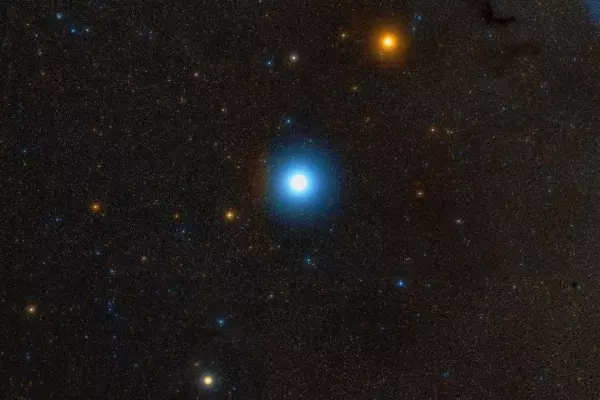
Altair (Alpha Aquilae) with Tarazed (top right) and Alshain (bottom left), image: Wikisky
The Arabs knew the star as part of the asterism it formed by Beta and Gamma Aquilae, known as Al Nesr Al Tair, a name that was later translated into Latin as Vultur Volans, or the Flying Vulture. The ancient Sumerians and Babylonians knew Altair as the eagle star.
Facts
Altair has the stellar classification A7 V, which makes it a white main sequence dwarf.
Like Vega, it rotates very rapidly, with a projected rotational velocity of 286 km/s at the equator and a rotational period of about 9 hours. As a result of being a fast spinner, Altair is flattened at the poles. For comparison, the Sun rotates once every 25 and a half days. Jupiter takes about 10 and a half hours, and is also wider from side to side than from pole to pole.
Altair’s polar diameter is about 25 percent smaller than its equtorial diameter. The star’s equatorial radius is estimated to be 2.03 times than of the Sun, while its polar radius is 1.63 times solar. The star rotates at about 90 percent of the speed it would take for it to blow apart.
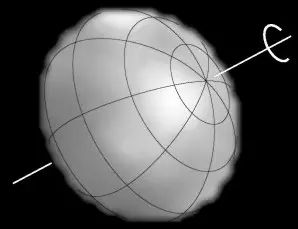
Image of the rapidly rotating star Altair, made with the MIRC imager on the CHARA Array on Mt. Wilson. Image: Ming Zhao, John Monnier
Altair forms a line of stars known as the Shaft of Aquila, or the Family of Aquila, along with the stars Beta and Gamma Aquilae, better known by their proper names, Alshain and Tarazed.
Altair has three optical companions, stars that are not physically close to it but appear along the same line of sight in the sky.
The constellation Aquila represents an eagle. In Greek mythology, the eagle was the bird of Zeus and carried the god’s thunderbolts. In one of the myths, the eagle kidnapped Ganymede, a beautiful Trojan boy, and took him to Olympus, where he served as the cup bearer to the gods. Ganymede is represented by the constellation Aquarius.
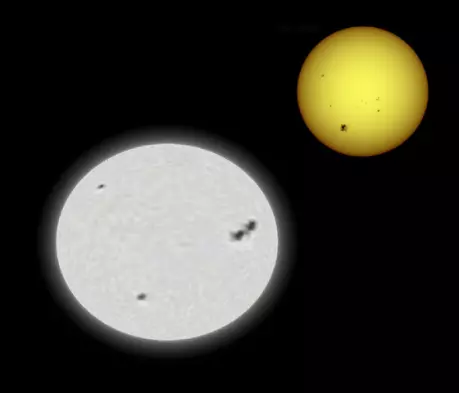
Altair and Sun in scale.
In a Chinese folklore story, the stars Altair and Vega represent a cow herder and a weaving girl who can only meet each other after crossing a celestial bridge formed by a flock of magpies over the star Deneb. The myth is celebrated in an event called the Qixi Festival. In the story, the two lovers receive the gods’ permission to marry and decide to abandon their occupations. This angers the gods, who decide to separate them and send them back to their jobs on opposite sides of the river. The lovers are, however, allowed to see each other one night each year – July 7 – but only if the night sky is clear. The evening of July 7 has also become a holiday called Tanabata (“evening of the seventh”) in Japan, with prayers offered for clear skies so that the lovers can meet.
Altair has been mentioned in many works of science fiction over the years. Altair 4, a fictional planet orbiting the star, was the setting of the film Forbidden Planet, and several planets in the Altair system were also mentioned in Star Trek (in Star Trek II: The Wrath of Khan, “Amok Time” in The Original Series, “Encounter at Farpoint” in The Next Generation, and “Prophet Motive” in Deep Space Nine).
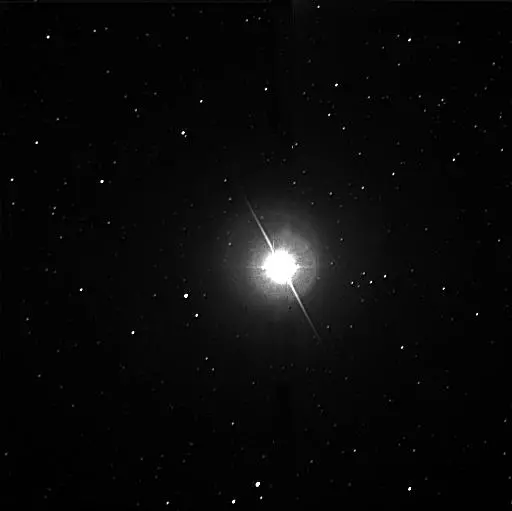
The star Altair. Image: NASA/JPL/Caltech/Steve Golden
Altair – Alpha Aquilae
Constellation: Aquila
Location: 19h 50m 46.99855s (right ascension), +08°52’05.9563” (declination)
Spectral class: A7 V
Visual magnitude: 0.77
Absolute magnitude: 2.21
Mass: 1.79 solar masses
Radius: 1.63 – 2.03 solar
Luminosity: 10.6 solar
Temperature: 6,900 – 8,500 K
Distance: 16.73 ± 0.05 light years (5.13 ± 0.01 parsecs)
Variable type: Delta Scuti
Designations: Altair, α Aquilae, 53 Aquilae, BD+08°4236, FK5 745, GCTP 4665.00, GJ 768, HD 187642, HIP 97649, HR 7557, LFT 1499, LHS 3490, LTT 15795, NLTT 48314, SAO 125122, WDS 19508+0852A
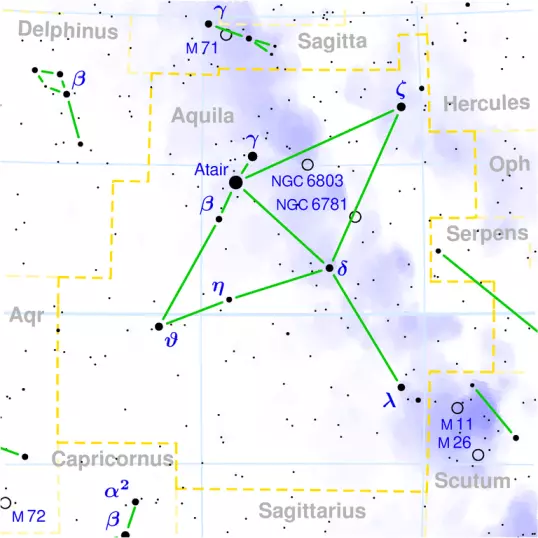
Altair’s position in Aquila constellation. Image: Torsten Bronger